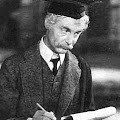I've been answering a few questions today re. the precise definitions of the premise, logline and step-outline for next Wednesdays OGR. The definitions were included at the end of the 'Making Stories' briefing presentation, and further definitions are available as part of the scriptwriting resources on myUCA. However, for your ease of reference, see definitions below. You should see how the emphasis of the OGR is not you giving me full-blown scripts, but rather these condensed summaries of your stories and structures. You might have written more in-depth versions as part of your own process, but all I want to see on OGR day is your ability to express your stories in their most essentialised way.
The Premise
This is one line that sums up the writer’s starting off point, the rationale for the existence of the story at all. It can be vague along the lines of a theme like:
The triumph of love and community over violence and selfishness.
Or philosophical like:
An examination of duality: Love/Hate, Past/Present, Action/Passivity, Innocent/ Experience.
Or simply sum up the starting off point for the story something like:
A young country boy witnesses a murder and a city policeman must go into hiding with him in his country community when the killers get on his trail...
The Logline
This is a summary of the story made in one or two sentences that attempts to answer the questions: Who is the lead character/s? What is their problem? How will they deal with it?
It can be useful to write because it forces the writer to distill what happens in the story down to the briefest possible summary. This in turn makes it necessary to make choices that can reveal what the most important part of the story is.
The Step Outline
This maps the entire plot scene by scene in a limited way. The action is summed up in paragraphs consisting of a line or two for each scene.
Use your social networks to get the message out there. Many thanks.


Thanks Phil this makes so much more sense now. Thanks!!
ReplyDelete